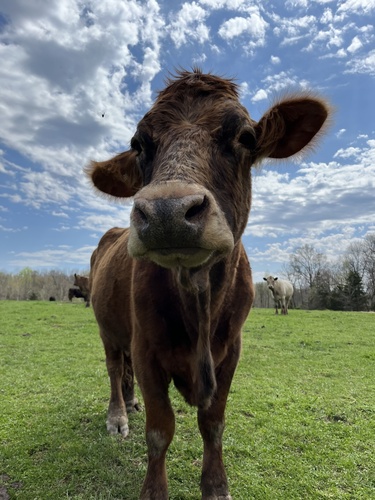
Domestic Cattle
Bos taurus, or domestic cattle, graze lands globally, contributing to agriculture and ecosystem health. Known for their robust physique and ruminating digestive system, they provide essential resources like milk and meat. Their adaptability has made them integral to human societies and landscapes worldwide.
15-20 years
Lifespan
317.51466 - 798.31768 kg
Weight
Length: 1.5 - 1.8 m
Size
Brown, Black, White
Color
25 mph
Top Speed
Distribution Range of the Domestic Cattle
Bos taurus, commonly known as domestic cattle, were originally derived from the wild aurochs (Bos primigenius) in regions of the Middle East and South Asia. Domestication is thought to have occurred around 10,000 years ago. As a result of domestication, cattle have been introduced worldwide and do not have a specific native region anymore.
Domestic Cattle's Habitat
Environmental Conditions
Domestic cattle are highly adaptable and can be found in a variety of habitats across the globe, from tropical rainforests to grasslands and temperate regions. They are primarily kept in areas suitable for agriculture where there is access to pasture, fodder, and water.
Ecological Niche
As a domesticated species, Bos taurus primarily occupy agricultural landscapes. They play a role in grazing ecosystems, influencing plant community composition and nutrient cycling by grazing on grasses and other vegetation and returning nutrients to the soil through manure. Cattle are also an integral part of many agricultural systems, contributing to beef, dairy, and leather production.
Copyright @ Nature Style Limited. All Rights Reserved.
 English
English